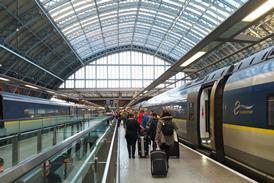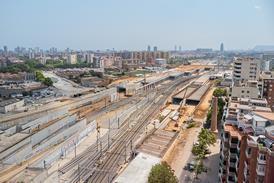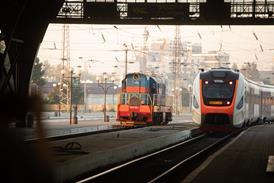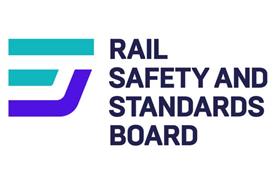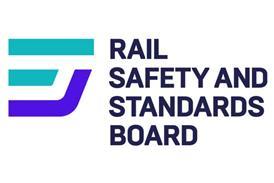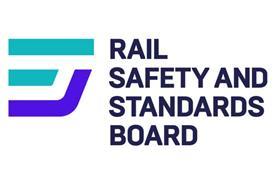INTRO: Fred Mau* points out that rails have shattered before on the scale observed after last October’s derailment, and points to the interaction of rolling contact fatigue cracks with residual stresses in the rail
THE PICTURE of the rail recovered from Hatfield in RG 3.01 (p157) prompts me to write. The fragmented rail displayed is alas not extraordinary, and the events leading to its breakage were sadly foreseeable.
The saga of the Hatfield derailment and the commentary following has revealed a shallowness of knowledge in Britain’s railway industry. Another railway magazine called for the return of the grey-headed railwaymen who have left the industry over the past decade, an insightful remark.
It has been clear for several years that Britain’s track has been deteriorating. Evidence visible to a knowledgeable eye has included ’square-topped’ rail profiles, cyclic top, corrugations, whitened ballast and poor cess drainage. About 11 years ago, I asked a very senior British Rail research engineer why rail was bending over sleepers. He was taken aback that a member of the public had noticed, but immediately embarked on an explanation of the situation and what was being done about it.
Fast forward to today, and that engineer and many others have departed. My concern is that there appears to be no forum allowing transfer of his - or anyone else’s - knowlege and expertise to those now responsible for the track, with the result that knowledge about some quite fundamental issues appears to have been lost to the industry.
I hope the following comments on rail management will help your readers understand the probable situation at Hatfield - probable because I have had no privileged access to data; only what can be gleaned from railway magazines and web sites.
Gauge corner cracking
Given all the discussion about gauge corner cracking, it would be as well to start there. Fig 1 shows an example of cracking that is developing into head checking. When a wheel passes over rail, the actual area of contact is less than the size of a 5 pence coin or a US dime. Given that commonly around 10 tonnes of load acts on that small area of less than 230mm2, the compressive forces are higher than rail steel can accommodate elastically, with peak stresses commonly around 1 000 MPa.
However, the contact patch is surrounded by unloaded rail, so the steel has nowhere to go except to squeeze out from the rail surface. As compressive forces are acting, the material is said to ratchet: the steel microstructure is distorted along grain boundaries in the steel.
Clearly, hard and clean steel will be less likely to act in this way, which is why all rail steel manufacturers have invested so heavily in production facilities able to provide these qualities. However, the ratchetting process lays the ground for potential cracking of the rail surface. And if the compressive forces are high enough and the steel is relatively soft, the rails will wear and plastically deform (Fig 2).
Being conical in shape, the wheel tread is able to travel around curves simply by moving laterally across the rail head. Hence a wheel will tend to have its flange close to the gauge face of the high rail on a curve (with a relatively large rolling circumference), while the opposite wheel on the same axle will have its flange away from the gauge face of the low rail, producing a smaller rolling circumference.
Fig 2 also shows what happens when a worn wheelset is added to the worn rail pair. These are real profiles, where the wheels shown actually passed over the rails shown. The worn wheels can be seen to match the shapes of both rails very closely, creating wide contact patches between wheel and rail.
As the high rail wheel on the left has a larger radius from the centre of the contact patch to the centre of the axle than is the case for the low rail wheel on the right, the two wheels roll a different distance for each revolution of the axle. If that difference matches the different distance the wheels must roll around the curve, well and good. Otherwise slip must occur.
The larger rolling radius of the high rail wheel means that normally the low rail wheel slips. This slippage occurs in a variety of ways that depend on such things as rail surface debris, coefficient of friction and humidity. Think of the process as a sort of wriggling which can happen continuously or in a slip-stick fashion. The technical term for this is creep, and as it is along the rail it is longitudinal creep. One common result is corrugation on the low rail.
Fig 2 shows the high rail wheel hard up against the gauge face of the high rail. This is common for the leading wheel of a bogie or two-axle vehicle, but normally the rear or trailing axle is displaced towards the low rail, just as the rear wheels of a car tend to cut the corner. Also, the curve holds the rear or trailing axle so that the leading axle is out of line with the true curve radius at that point. The net result is that the leading wheels are oriented at an ’angle of attack’ to the rail. This causes the leading wheels to be continuously moving sideways slightly as the vehicle progresses forwards. More slippage occurs, and lateral creep results.
However, there is a third element at work. Consider the contact patch of the high rail. It may be seen that this stretches around the gauge corner. Let us say the centre of the patch is somewhere on top of the rail, fairly close to the gauge corner. The part of the wheel at and below the gauge corner must move relative to the part of the wheel at the centre of the contact patch because it has a larger radius. The whole wheel is rotating together, so the distance covered by one rotation is 2

